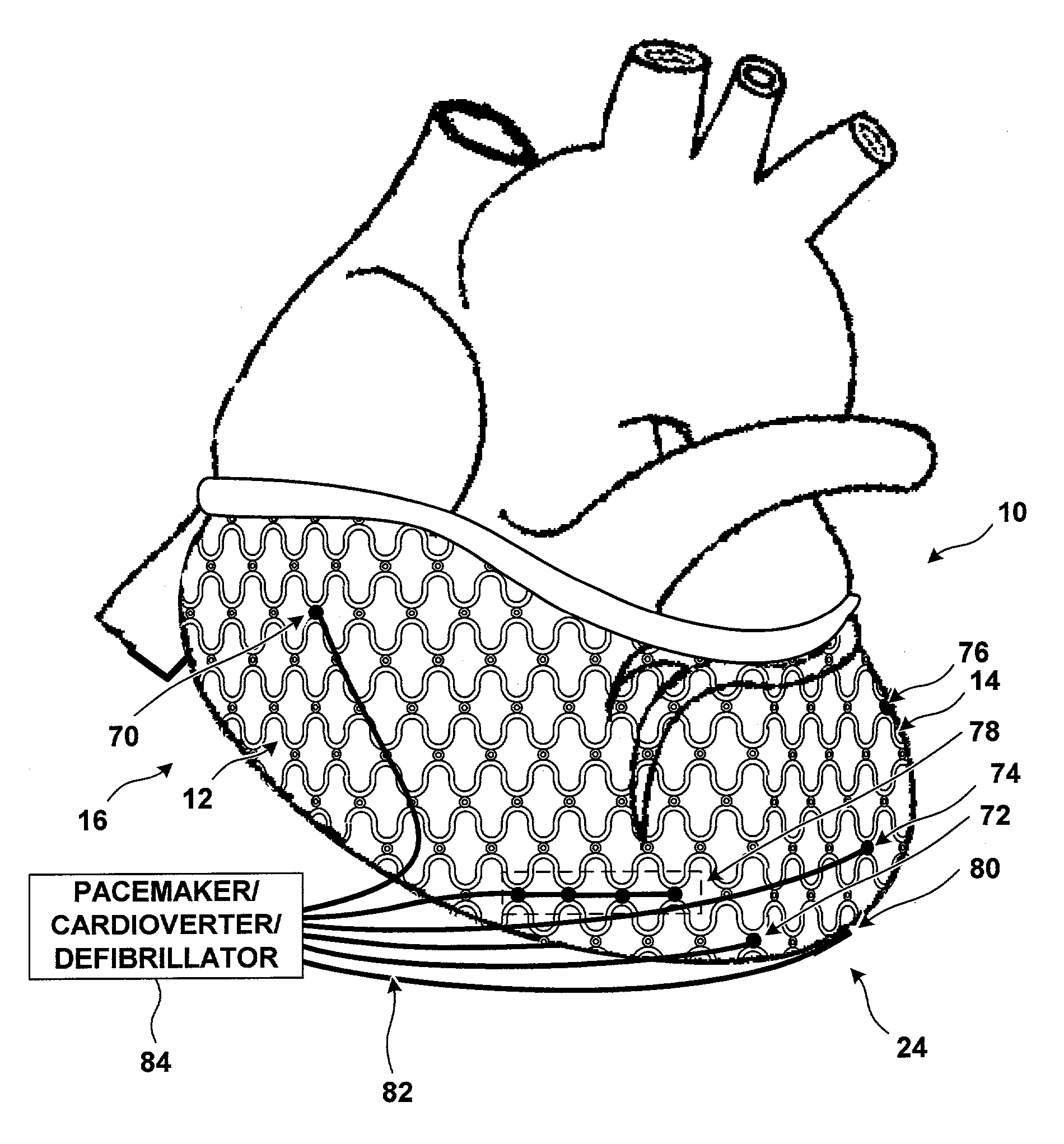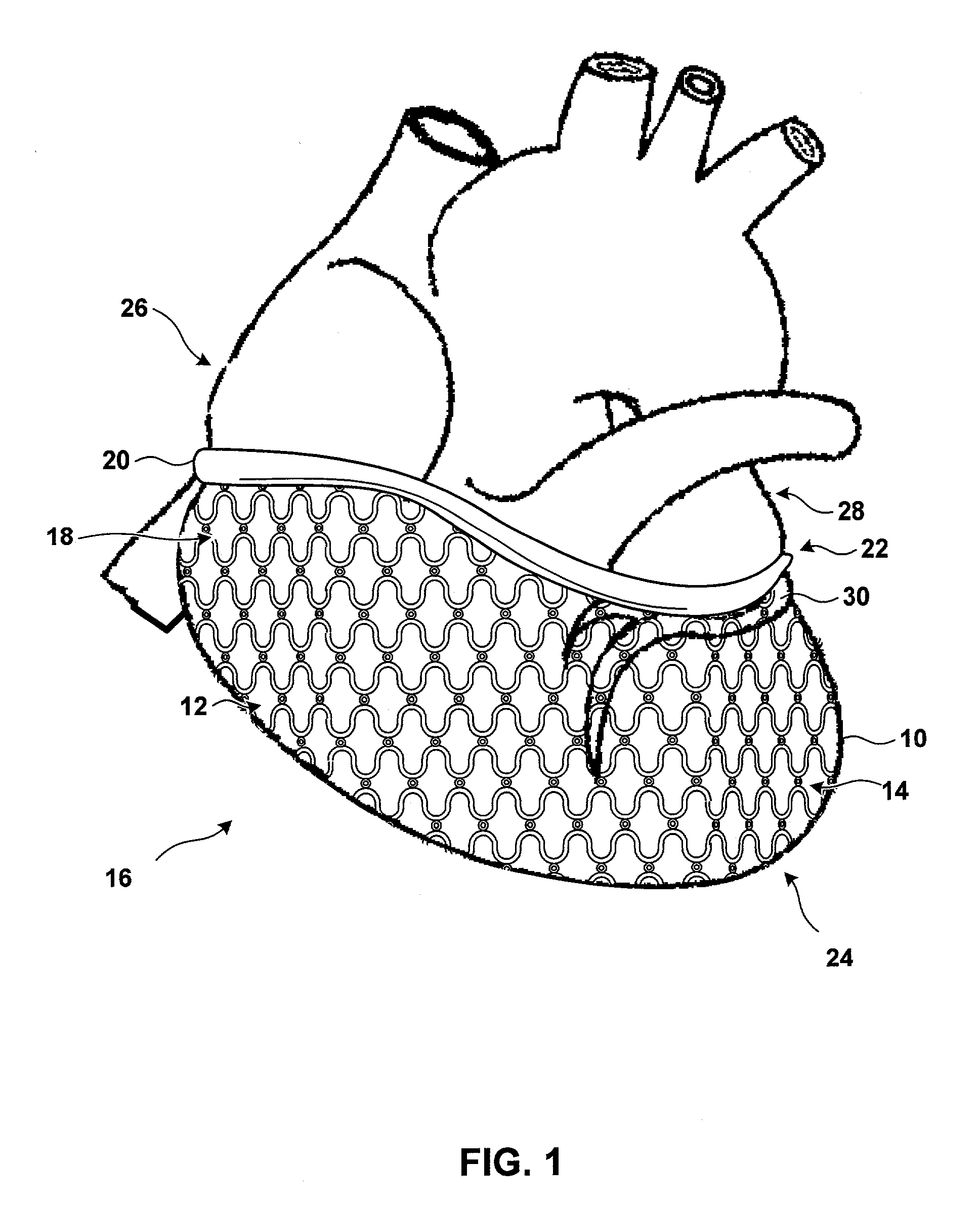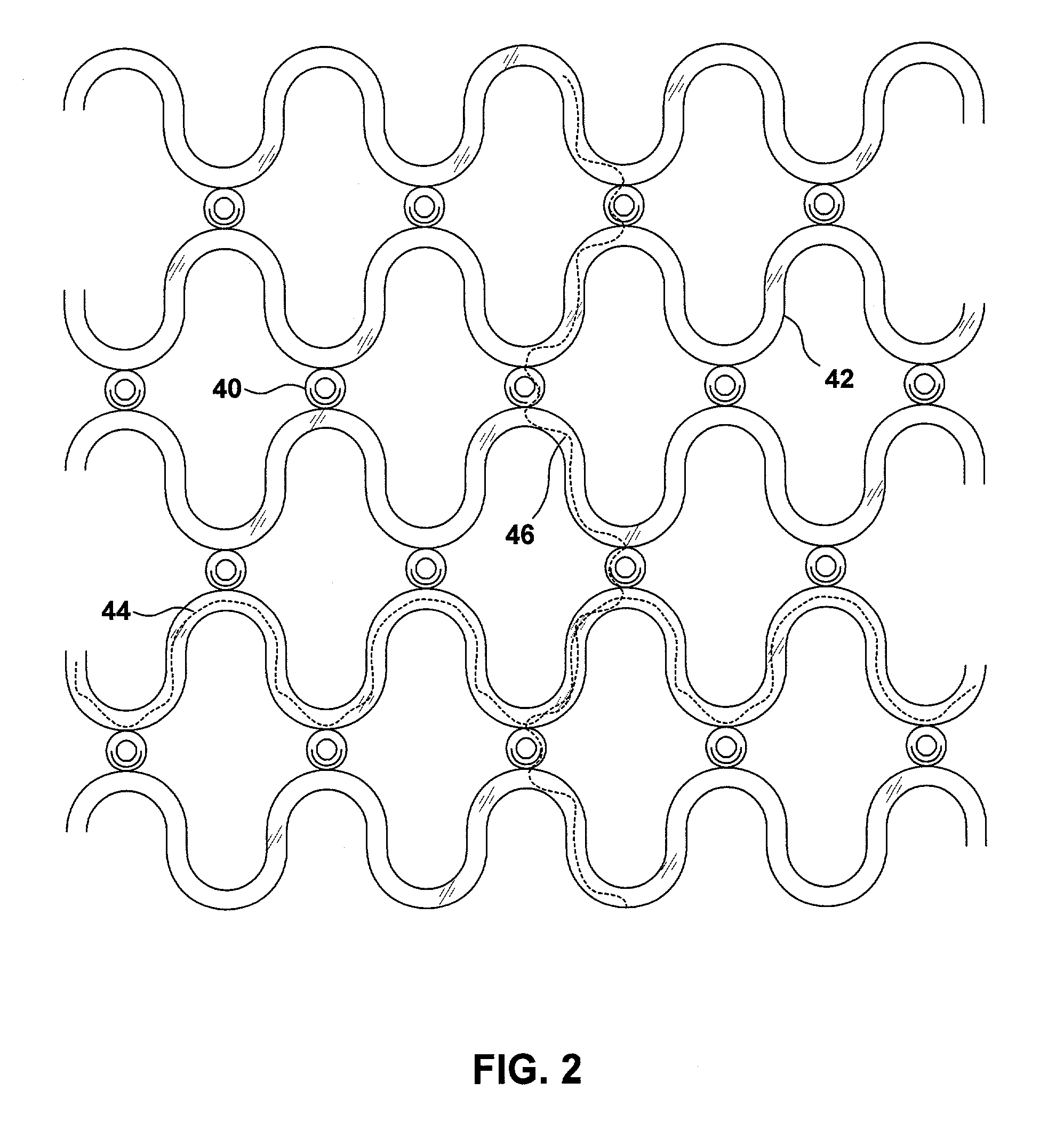Cardiac restraint with electrode attachment sites
a technology of electrode attachment and cardiac restraint, which is applied in the field of heart failure treatment, can solve the problems of inability to adapt the cardiac resynchronization device to the needs of the patient, and the electrode placement is less than ideal, and achieves the effect of efficient electrical pacing stimulation of the chamber, convenient and convenient electrode placement, and convenient patient customization
- Summary
- Abstract
- Description
- Claims
- Application Information
AI Technical Summary
Benefits of technology
Problems solved by technology
Method used
Image
Examples
Embodiment Construction
[0031]In the following detailed description of the preferred embodiments, reference is made to the accompanying drawings that form a part hereof, and in which are shown by way of illustration specific embodiments in which the invention may be practiced. It is to be understood that other embodiments may be utilized and structural or logical changes may be made without departing from the scope of the present invention. The following detailed description, therefore, is not to be taken in a limiting sense, and the scope of the present invention is defined by the appended claims.
[0032]FIG. 1 shows a human heart 10. Right ventricle 12 and left ventricle 14 of heart 10 are jacketed by a harness 16. Harness 16 includes a mesh-like restraint 18 and a circumferential attachment member 20. Circumferential attachment member 20 secures harness 16 proximate to the base 22 of heart 10.
[0033]Harness 16 may be placed around heart 10 during open-heart surgery. The patient is typically placed in the s...
PUM
 Login to View More
Login to View More Abstract
Description
Claims
Application Information
 Login to View More
Login to View More - R&D
- Intellectual Property
- Life Sciences
- Materials
- Tech Scout
- Unparalleled Data Quality
- Higher Quality Content
- 60% Fewer Hallucinations
Browse by: Latest US Patents, China's latest patents, Technical Efficacy Thesaurus, Application Domain, Technology Topic, Popular Technical Reports.
© 2025 PatSnap. All rights reserved.Legal|Privacy policy|Modern Slavery Act Transparency Statement|Sitemap|About US| Contact US: help@patsnap.com



